Transgender Characters on Television: Quality vs. Quantity
The 1990s and early 2000s saw a rise in gay and lesbian characters in popular television shows such as Jack in Dawson’s Creek, Ellen in Ellen, Will in Will and Grace, and a number of characters in Roseanne. The lesbian and gay community was beginning to see themselves regularly represented in the media, a trend that would continue through today. Around twenty years later, a similar change is occurring on TV with regard to the transgender community, which is estimated as numbering 700,000 people 1 in the United States. Transgender refers to people whose gender identification and/or expression differ from the gender they were assigned at birth 2. Transgender people face certain challenges and discrimination with healthcare, employment, military service, housing, and more because of their identities.
More and more transgender stories are being told on television. While transgender characters have been featured on sitcoms and dramas for some time, recent years have seen a progression in representing transgender characters on television. An increase in the number of transgender characters initially appears to be positive, but, as GLAAD’s “Trans Images TV Report” shows, it may be the quality of the representations that is more important, as transgender people have long been stigmatized and stereotyped by the media. Producers still have a long way to go to ensure there is a sizable variety of positively represented transgender characters on TV.
Transgender Stories on Reality TV
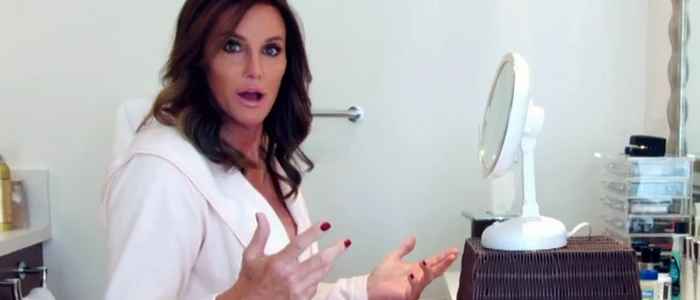
In 1997, Ellen DeGeneres came out as gay on her show, Ellen, after which she faced backlash from major corporations who pulled their advertising spots and criticism from major publications for showing affection while in public with her partner. 3 Despite this, Ellen raised awareness about gay issues and became a role model to a population who previously had few role models in the media. What DeGeneres’ coming out did to increase the conversation about the lesbian and gay community, Caitlyn Jenner’s coming out in April 2015 has done to stir up conversation around the transgender community. Although, like DeGeneres, Jenner’s coming out has been met with both positive and negative responses, she is stepping forward as a highly visible role model for the transgender community, another community with few meaningful representations of themselves in the media. Jenner’s high profile story has been documented on television with her E! reality show, I Am Cait.
I Am Cait has contributed to a recent surge in reality shows focusing on transgender people that began with Discovery Life’s New Girls on the Block in April and continued with TLC’s I Am Jazz and ABC Family’s Becoming Us. The shows represented a variety of stories within the transgender world, telling the stories of a community of trans women in Kansas City, a teenage YouTube star, and of a family with a transitioning father. The shows document triumphant moments in the women’s lives, like trying on a wedding dress, and touch on the difficulties of being transgender, like facing unemployment because of their transgender identity. These reality shows are a step in the right direction of representing a variety of transgender experiences and educating the public on a marginalized community. However, the success of the shows is still limited in that almost all the women featured are white, and they are only representing male to female transitions. Outside of reality television, a change in the depiction of transgender characters is also happening on scripted television.
Transgender Representation on Scripted TV
Perhaps the most significant stride in representing transgender people on television is the number of recurring transgender characters that have been created in recent years. In the past, many transgender characters had insignificant roles, often depicted as sex workers or victims in crime procedurals. Now there are recurring transgender characters in successful shows like Transparent, Orange is the New Black, and The Fosters. However, it is significant to note that these shows are all on subscription based channels, apart from more accessible network television. One exception to this is Fox’s Glee, which has been applauded (and criticized) for its portrayal of a diverse set of characters on network television since the show began in 2009. Glee’s story line has included two major transgender characters during its run time, Unique Adams and Sheldon Bieste, who depict two very different transgender experiences. While there has been an increase in meaningfully depicted recurring transgender roles in television, a look at nonrecurring roles for transgender characters shows that quality over quantity is more important.
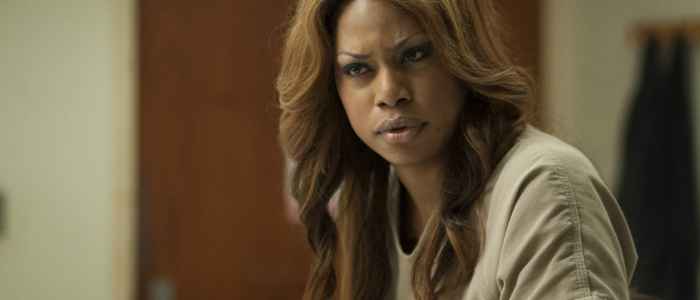
In 2014, GLAAD, an LGBT media advocacy organization, put together an installment of their annual “Trans Images TV Report” 4, which found that many representations of transgender people on television are negative. The organization found that, of the new episodes with nonrecurring transgender characters analyzed, 54% represented transgender people in a defamatory fashion, 34% ranged from problematic to acceptable, and only 12% were outstanding. While there was a decrease in transgender characters portrayed as victims, villains, or sex workers, many transgender characters served as the punchline to offensive jokes. They cited transgender representation in Lifetime’s Drop Dead Divas and CBS’ Elementary as outstanding for depicting multidimensional characters. Comedies like Fox’s Family Guy and CBS’ Two and a Half Men, however, included jokes at the expense of transgender characters. Family Guy continues to use outdated language when speaking about transgender people and depicts them as unattractive characters to be avoided. Two and a Half Men featured a story arch about Paula, a transgender love interest for Alan, in which they emphasized her “male traits”, like sitting with her legs open, as a running joke. GLAAD’s report highlights the importance in not only depicting a number of transgender characters, but in representing developed, multifaceted characters.
One last aspect of transgender representation worth mentioning is the rise of transgender actors on television. A rising number of the transgender characters on television today are represented by actual transgender actors, such as Tom Phelan in The Fosters and Laverne Cox in Orange is the New Black. Transgender actresses have also been cast as non-transgender characters, such as Laverne Cox in MTV’s Faking It and Erika Ervin in FX’s American Horror Story, exemplifying that transgender people should not be defined solely by the transgender part of their identity.
While there are many roles on scripted television that portray transgender people, not all are quality depictions. The representation of transgender people in reality television fares better, although there is room for improvement. As a popular, widespread medium, television is an important catalyst for educating the public and continuing the conversation on transgender equality. Television creators as a whole still have work to do establish that transgender people are represented as developed, multidimensional characters, ensuring that the transgender community can see a reflection of itself on television.
Works Cited
- Gates, Gary J. “How Many People Are Lesbian, Gay, Bisexual and Transgender?” Williams Institute. The Williams Institute, 01 Apr. 2011. Web. 04 Oct. 2015. <http://williamsinstitute.law.ucla.edu/research/census-lgbt-demographics-studies/how-many-people-are-lesbian-gay-bisexual-and-transgender/>. ↩
- “GLAAD Media Reference Guide – Transgender Issues.” GLAAD. N.p., n.d. Web. 04 Oct. 2015. . ↩
- Lo, Malinda. “Back in the Day: Coming Out With Ellen – AfterEllen.” AfterEllen Back in the Day Coming Out With Ellen Comments. After Ellen, 08 Apr. 2005. Web. 08 Oct. 2015. <http://www.afterellen.com/tv/34682-back-in-the-day-coming-out-with-ellen/2>. ↩
- Townsend, Megan. “GLAAD’s Third Annual Trans Images on TV Report Finds Some Improvement.” GLAAD. N.p., 14 Nov. 2014. Web. 04 Oct. 2015. . ↩
What do you think? Leave a comment.
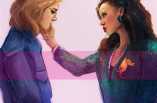
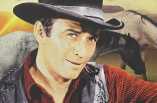
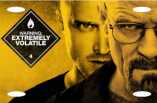

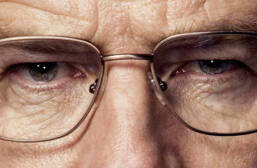
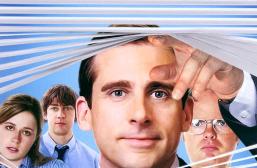

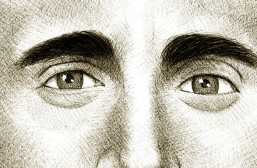

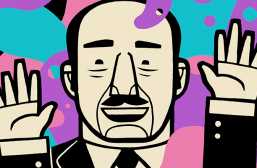
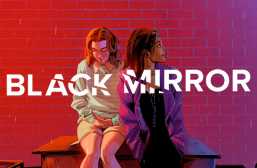
I am glad to see the Transgender community getting mroe representation on TV, but you’re right that quality varies. I find the same thing with bisexuality. More and more characters appear but they don’t all create positive (or even accurate) portrayals. I must say though, transgender actresses getting non-transgender roles is a wonderful thing to see increase.
Out of interest, how did you find Daniela Sea’s portrayal of Max in The L Word? From a personal standpoint, I thought his journey was one of the better aspects of the show.
Very interesting article! It’s nice to see that TV is finally keeping up with its time and allowing to represent all communities and individuals, with no regards to their sexual preference, gender, colour or religion. Yet we are not quite there yet, there is so much more to do, these are only baby steps. The problem is that they are also defined and pointed out by other characters as transgender, therefore their difference is not completely accepted by society yet.
Thanks! That’s a great point about pointing out characters as transgender. It’s great to celebrate differences in a positive way, but it shouldn’t be the only characteristic that defines a person.
Don’t forget Sense8, on Netflix. It features a real live trans woman (Jamie Clayton), playing a trans character (Nomi Marks). It’s the best portrayal of a trans character I’ve ever seen. She’s empowered, smart, sexy, and awesome.
I’ve hear really great things about Sense8 and have been meaning to watch it. I’m glad their portrayal is so well done!
I’ve only recently caught up to that.
A couple of years ago, Showtime aired a TV film called Soldier’s Girl, based on a true story about an American soldier’s relationship with a male-to-female transsexual that led to the soldier being murdered by fellow military men. Heck, back in 1986 CBS aired a very good TV film based on the autobiography of tennis player Renee Richards, with Vanessa Redgrave playing the male-to-female Richards.
Yes, there have been the occasional portrayal of transgender characters on television for years, but it definitely seems now that it’s starting to happen more often.
Rikki Lake was doing Transgender specials every other week in the 90’s. Everyone else is just catching up!
It was Rikki Lake specials that helped me realise what was going on with me and that it wasn’t a bad thing. It was every single other show that made me feel ashamed.
I think Maura in Transparent is more representative of most transgender people. It’s a pity however that there isn’t one (that I know of) series or movie featuring people who transition to male.
Daniela Sea in The L Word is a good example of this I think. Her character Moira transitions to Max.
Yea. It seems there is a form of gender bias even in the portrayal of transgender people. This may be because a woman dressing in clothes assigned as male clothes and short hair is accepted by society but men wearing clothes assigned as female clothes are not. Is it that society chooses to be somewhat inconsistent and illogical in sexual (no not the often misused ‘gender’) equality. Inequality is not the exclusive preserve of cisgender women.
There is a character in The L Word who transitions from female to male. Although the story line is a bit far fetched, he goes from being a lesbian to a gay man who then gets pregnant before completing the gender reassignment process. Yes, Maura is a wonderful character, I loved that show.
… or it could be because females don’t have the influence and resources to get their stories told. As always, they’re at the bottom of the pile.
Although both the highest profile shows with trans women in (Orange is the New Black and Transparent) were both created and run by non-trans women (the latter about her own experiences as the daughter of a trans woman).
What a great topic and question to raise. As with all under represented groups, its vital to create characters of truth and not just jam an abundance of misrepresented and stereotyped images into viewers’ faces. Although it is not television, Dallas Buyers Club is one of the best sources of media that I believe effectively portrays a transgender individual in a humanistic role.
I myself am a communication major with a minor in gender studies. So it’s very evident that the LGBTQ community is still unfairly portrayed though media. However it is evident that there is progression. Most could even argue it’s not enough. The newer show How to get away with murder, showed a sex scene of two gay men early on in their first season. It made some news coverage. Some great and some bad. There are a countless number of sex scenes between a man and a woman. Yet most shows refrain from doing the same for the gay community. Then there is transgender individuals that has become more common in the media. I would say a lot of it has to do with Caitlyn Jenner. And the there is Laverne Cox in the new and popular show Orange is the new black that has raised a lot of positive attention. Progression is indeed happening!
Your article is very engaging. It is a good read and I love that you mention the show Roseanne! That show does a good job at representing the lesbian and gay community.
Thanks! Roseanne is one of my favorite shows and progressive in a lot of ways. I couldn’t resist mentioning it!
You bring up two very good points. 1. Some of the most popular examples of transgender characters in recent memory are on streaming services. It seems like steaming services have a bit more freedom when it comes to their content, and the transgender characters on streaming services like Transcendent are positive portals.2. A lot of transgender character on TV shows have been treated as nothing but gross out comedy, and that is not cool at all! Take the Family Guy episode where Quagmire’s father has a sex change. The writers of the show may think they are making funny commentary on transgender people, but they are really hurting the images of transgender people with gross out humor and sex jokes.
Thanks for this.
We have been living in the shadows of the LGB for such a long time, now it is our turn to shine. And I am glad that they are being aired on the networks in the likes of ABC Family, TLC and E. The timing could have not been any better for I am Jazz to replace segments of the Hate filled Duggars.
Good piece. We’re ignoring sense8 because it’s a non cliched portrayal of a trans woman by an actual trans woman.
It’s a short life, why can’t we all be happy for one another?
Looking forward to boy meets girl!
Good article for the most part. One problem with two of your examples. Most reality television is garbage which depicts people at their worst, so it’s not the best to expect fair portrayals of Transgender people in that genre. The other one is Family Guy. Again, it’s low brow comedy that aims at the lowest common denominator. Plus, they kind of go after everybody, so I don’t think they’re singling out the Transgender community per se. Perhaps choosing to shed a spotlight not only on the bad examples but also on the good, with specific examples, like Lavern Cox in OITNB or Jeffrey Tambor in Transparent would have helped strengthen your article.
You may have misunderstood my argument about reality television. The reality TV programs that I mentioned were largely positive representations. My criticism was just that most shows focus on white male-to-female transitions, rather than representing a spectrum of transgender experiences.
I think with any character it is important to make them as complex as possible, while trying not to make their “transgender”ness the main discussion point of them. For example, it would be interesting to see a male main character come out later in the series as a FTM, or vice versa. There are a number of transgenders who I had no idea they were trans until I looked into it, so it would be interesting (and possibly more accurate) to portray this on screen. I enjoyed the article, thanks!
People need to see that we go about our lives no different than anybody else. We live our lives Authentically.
What?
Although we who are lucky enough not to be in this position can never fully understand what is going through the minds of somebody who is; I do think we must understand that they are people who are suffering;
and the fact that they are prepared to go through the horrendous sequence of operations to achieve their aim and then to live in the world and be regarded as freaks, must indicate how much of a trauma it is for them to carry on their existence in the wrong body.
I hope though that this media interest is not going to be prurient and sensationalist but to get to the heart of what it is like for them and to understand them as people, their hopes and fears and how their lives have changed before, after and during this whole process.
Hopefully then this will increase our general understanding and maybe help other people who are feeling this way.
For trans people who are not famous, issues abound, including not having jobs, physical safety and having no money for grs, ffs, binders, wigs or other accoutrements that make transitioning easier. facebook’s real name policy is causing misery for those trans people who are socially isolated, financially impoverished or trying to hide their identities from employers, trolls and transphobes. we are working on pressuring FB into changing the policy that allows haters to target trans people while stripping away protections from the victims.
Super interesting article, never thought about the crucial ”Quality” vrs ”Quality” factor in terms of transgender representation. It definitely has more of an outcome showing a well written character dealing with real life experiences being brought up in such environments.
You bring up interesting points and certainly part of the ongoing struggle for equality. It seems that transgender characters are now beginning to face the same issues that other minorities are working through, namely that representation is not nearly the same is fair and involved representation.
There is diffidently more representation today than there were a few years ago. Becoming us, which followed the lives of Ben and his family has his father transitions. I think this show was done tastefully.
Wonderful article! It definitely put a few things into perspective that I had never considered before. I am interested to hear more!
I’m glad it gave you something to think about. That’s a great compliment!
I think that the quality of Trans* narratives is bare in most media representations, largely representations come from a framing of cis-fascination, not from a place of exploring these stories. Where are the actual Trans* main characters? Further, why is it that every representation we see is that of tran-women nearly always, aside from trans men, there are many other gender-fluid and gender non-binary trans identities which are ignored.
I shared with my class David Wilcox’s “Why ‘South Park’s’ depiction of Caitlyn Jenner was one of the show’s most despicable moments” for Auburn, NY’s *The Citizen.* It smartly parallel’s Marcie’s argument about the deeply problematic depiction of trans persons and characters in contemporary TV. No doubt her claim, following the GLAAD report, is persuasive and timely. Representation, after all, that is caricature, biased, flat and lacking nuance, or otherwise negative may serve to *reify* ignorance and bigotry. Her point about quality is purposeful in that way, and clearly resonates, based on the comments already on the page. Excellent work.
Further, the issues of diverse representation she notes are surely embedded in systemic gender-based biases. We don’t see non-binary characters or trans men, then, because of deep insecurities in the US about masculinity but also ongoing power dynamics that privilege men (over women, within that binary). Several others have suggested something similar.
I’m glad you liked the article. And it’s great to hear that there are teachers who are talking about these issues with their students!
Now I am a female to male transgender myself, as well as being gay. But I feel that the overt political awareness is almost a tad too strong in the media. Now I am fully supportive of LGBT representation in our media, but I feel like it needs to be less obvious. I feel that these directors are putting in these characters for the sole reason to say, “look! We have gay characters! Look how progressive we are!”
That’s fine in one way, but on the other end, a lot of times these characters only struggle has to do with their sexuality/gender. If a character is gay, their biggest struggle is abuse, coming to terms with sexuality/gender, or perhaps their relationship problems. Their purpose of a character is solely to be gay or transgender. That being said, I would much rather see a quality character of LGBT minority over quantity.
I would love to hear your thoughts on more specific representations, particularly more popular ones like Orange is the New Black. I’m very happy that we’re making progress, but a quick look at the representations out there show we have a long way to go.
There is a philosophy that whenever a movement starts up and really comes to the forefront in society, that quantity is more important. Get the word out, push it in people’s faces so that they become aware. That is an understandable concept. But, if this quantity is lacking quality, then it is very possible that the representation is hurting the cause more than helping it. Characters need to not be created simply because how they identify. The identity needs to be seen as just another aspect of their overall personality. It is important for representation to be real and honest.
I am loving how our reality in television is transforming into a sense of realistic people. Not every person in real life is going to be heterosexual and white, so why depict that in television? With the transgender community finally getting recognition as “regular” people is extremely groundbreaking. I would have to say based on television characters that are transgender, my absolutely favorite is Laverne Cox. In OITNB, we see Laverne’s character struggle with the transition. In her case it was not so much the physical factor she struggles with, but the emotional toll it takes on her by the ridicule she faces. I believe this became more evident in the last season of OITNB; this was so raw and I appreciate the writing for this character that coincides with the overall plot.
Transgender people are finally getting the respect that they deserve, along with the rolls. This makes me hopeful for society.
roles*
I wanted to chime in with more examples. I have noticed more trans people show up on the cast of reality TV. Chopped and Ru Paul’s Drag Race have had a trans contestants (among others). What I like about Chopped is that it’s not about gender, but cooking chops.
I think Chaz Bono has been an exceptional commentator and regular guy on TV although his mother certainly helped with his career.
There’s been an interesting dialogue about Project Runway and people are predicting a trans fashion hopeful. The casting by numbers approach is commonplace and I guess trans people have (sorta) made it to have their own place at the reality tv trough.
Good point about Chopped. That’s a great example of showing how a transgender person/character can have more to their story than just their gender identity.
As the world becomes more tolerant I think the media has to adapt to keep up with its audience’s views, however I’d still count most popular TV as slightly behind the people they’re trying to reach. Transgender representation is not hugely abundant, but it’s there, and it’s a start. Things are clearly getting better a little bit at a time.
Okay, this is coming from someone raised pretty much in the boondocks of Georgia. My family is Baptist, completely against transgenders and gays/lesbians. Yet somehow out of that background I came out I guess pretty tolerant. I have no issue with transgenders, lesbians, or gays. People can live their life how they want, as long as they are happy, I am happy. And it will be that was as long as they don’t try to force anything upon me. I’m really that way about everything though. Anyways, I love to watch this TV show called Modern Family (I can’t watch it when my family is home or there is a huge fight, just because of the gay couple). It is hilarious and I actually love how the gay couple is portrayed in the show. I mean, someone who is gay, lesbian, or transgender is no different from you and me. Everyone deserves to be happy and loved whether they are gay, straight, lesbian, bi-sexual, or transgender. We are all the same on the inside, we all experience the same emotions and desires. What I hate though is how people have been separated into groups, and how people are then stereotyping those groups. My favorite character of the Big Bang Theory is gay, and I don’t dislike him for it, but my family are disgusted by him. People are afraid of the unknown and different, it’s human nature. But since we possess a higher intelligence, aren’t we supposed to know to embrace our differences because our differences will make us stronger? I think transgenders, gays, and lesbians should be shown everywhere because children and people need to realize that people who are different from them are everywhere and those people are not bad or really any different from them.
Media representation truly can make a huge difference in the way groups of people are treated in society. However, women and people within the LGBT community are still severely underrepresented. There’s been studies done that show that when people watch a television show with 50% women characters and 50% men characters, they perceive it as being female characters even though it is equal. I wonder what the results would be about a study on amount of LGBT characters in a television show compared to the percentage of the population that is actually LGBT.
It’s definitely excellent to see more transgender characters on TV, though some representations are more developed and respectfully handled than others. Hopefully, more non-cisgender characters will be developed in media and thoroughly researched while in the creation stage.
I adore this article; it’s well-researched and respectful. I would have liked to see more commentary on intersectional transgender identities (for example, transgender people of color and their representation, or people whose sexual identities don’t conform to the mainstream in addition to their gender — as gender and sexuality are two separate phenomenon). Overall, excellent, excellent article.
Thanks for the feedback! This is a pretty complex topic, and I agree, there definitely could be more said about different identities related to gender and sexuality. Perhaps for a follow-up article!
I have not seen or watched any of these shows. The most I know about this topic is second hand info about the shows I’ve never seen, so this has been very informative.
I think this article is very significant to the time we are living in today. It is absolutely refreshing to see transgendered actors and actresses on television, but it is also crucial that we provide realistic, non-offensive roles to the actors and actresses. The LGBT community and transgendered individuals have been through many struggles, and continue to deal with negativity throughout their lives on a daily basis. Although what Caitlyn Jenner is doing is commendable and brave, I often question how positively influential she is to the overall community based on the nature in which her transition has been publicized.
I’m very happy to read this article. It’s really about time that trans actors get chances and trans characters get to exist. This article’s a great summary of recent change in TV.
This article wasn’t an editorial, but I am interested in the gap between number of trans actors and number of trans characters. I suppose if the number of actors outnumbered parts (meaning trans people didn’t only get trans parts) that would be good so long as the number of trans roles still grows. However I feel that it’s the other way, with trans roles often played by cis actors of the gender (cis-men playing trans-women, usually). This is usually attributed to the commercial demands of having a known star, so I hope that excuse loses water as more trans actors succeed in their fight for work and recognition. I also think it’s problematic that cis-actors not of the same gender are used instead of cis-actors of the same gender (casting a cis-woman as a trans-man instead of a cis-man as a trans-man, for example) because producers etc. reason that the most important aspect is the body and/or the physical transition, and that the gender can be performed. It may depend on how performative vs. intrinsic you think gender is, but I think as roles rightly move away from physical transition drama we can see more openness in casting. In which, hopefully, trans actors will dominate.
I think that this article provides a pretty good overview of the transgender characters and people in television today. Television has come a long way from portraying transgender characters as villains that everyone hated to regular people we know and love, and I think that we can only go up from here.
I like the idea of Transgender’s playing a Transgender role on series, such as Orange is the New Black, in order to raise awareness. Then again, I feel it’s very important that they don’t play a role as Transgender, in order to show that they are much more than that, and are not to be defined and only recognized as Transgender. I do agree with quality over quantity. Very good thoughts depicted in this piece! Good work.
I’ve always had problems accepting that reality TV is legitimate TV. It just always seems fake and caters more towards what sells instead of story. Which is why I agree with quality over quantity. I hope that with these new media outlets and production companies more diverse work will come out. This article was wonderful, great work!
The Fosters also does an interesting job in Season 4 with battling the trans/romance dilemma (Abbott, 2013) present in most transgender representations where transgender people are not seen as lovable, or relationship worthy, etc etc. One of the main characters actually falls for one of the transmen in the story (!!!).This, I would argue, is more complex and quality representation.
Laverne Cox as Sophia in Orange is the New Black is important in terms of quality because she is a representation of a black transgender women in prison-which I am sure as a demographic does not hold a high representation rate in quality OR quantity.
I really like how you organized your article and your main points of inclusion. You take a lot of broad, related points and do a good job of doing them all justice.